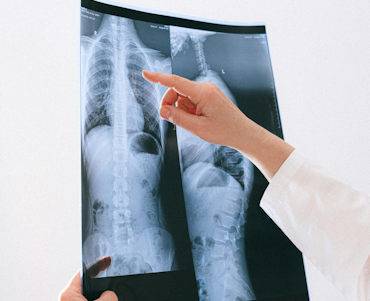
Dr. Maxwell Nartey
Professor of Symptometric Science, American School of Symptometry, NFP
World Center for Cell Education and Scientific Enlightenment
Do you want to have a long life? If yes, start taking good care of your lungs and throat.
Cancer, diabetes, pneumonia, bronchitis, high blood pressure, COVID-19, tuberculosis, etc., do not kill, contrary to what physicians and pathologists say. Also, old age does not kill. It is time to accept facts and discard the baseless beliefs that permeated and corrupted science. A person dies because they stop breathing. It is that simple.
The heart and lungs work together. Therefore, if the lungs collapse, the heart will also collapse. I am not discussing a person’s last days in hospice, where massive energy loss forces the digestive system to be the first to shut down. I am focusing this discussion on the non-availability of oxygen. Who are we without oxygen? Nothing.
Air contains oxygen, as do sugar, starch, oil, fat, protein, and water. As babies, we breathed first before we started sucking milk from a bottle or our mother’s breast. In other words, after birth, we breathe first before eating.
Why does a person stop breathing? Their lungs collapsed under the weight of lung garbage. Hospital ventilators and spirometers can only assist a person in breathing up to a point. They do not remove lung garbage.
The discussion of the lungs in the anatomy textbooks has so many holes that I decided to discuss the lungs from the Symptometry perspective, which will be more rewarding.
Lung capacity
We started breathing on our own when we were born. Some of us are now 80 years old, 98 years old, 110 years old, etc. Is our lung capacity the same? No, it is not.
The average lung volume and capacity is between 3 and 6 liters of air, depending on age. A healthy person’s vital lung capacity is well above 70%, meaning around 5 liters. If the mucus lining in the lungs absorbs and retains a lot of dust and air pollutants, it will displace cortisol, causing inflammation.
Lung inflammation reduces lung volume and capacity, causing susceptibility to bronchitis, coughing, and shortness of breath. Any treatment that fails to remove lung garbage will not remove the source of bronchitis and shortness of breath, medically called dyspnea. The person who frequently removes garbage from their lungs and throat will have a long life, no doubt about it. Here is what else should be known about the lungs.
If the epithelium lining the lungs disintegrates and becomes mushy fluid, fluid will build up in the person’s lungs or between the lungs and chest wall, causing pleural perfusion. If infection inflames the air sacs, causing pus and fluid in the lungs, the diagnosis will be pneumonia. The drug that is used to treat pneumonia does not remove lung garbage.
When people experience spasms in their laryngeal plexus and cough, they take cough drops or buy cough syrup. This is complete symptom treatment. Since symptom treatments never remove the cough’s source, the symptom worsens as the person ages. Here is what most individuals do not know about cough.
Many coughs result from the irritation caused by the residual symptoms of Pertussis (whooping cough) in the throat and lungs.
Children are vaccinated against Pertussis, but after three years, vaccinated teenagers become vulnerable to the disease against which they were vaccinated, which follows them into their seventies, eighties, or nineties. Then, they will cough until they die. Symptometry recommends ionizing the residual Pertussis toxin to prevent vulnerability to severe and chronic cough as the person ages.
Many lives have been prolonged by ionizing the residual toxins of Pertussis and tetanus, the two microbes whose toxins combine with those of streptococcus to close the throat. I am discussing this topic because it will never be found in any medical journal.
Throat closure
Throat closure blocks inhalation and exhalation, causing death. Deactivating oxidase, the enzyme that supports life, also terminates life. Therefore, there are three ways to die: 1) throat closure, 2) deactivation of oxidase, and 3) a fatal accident that suddenly destroys the breathing mechanism.
Many asthmatics died in their sleep because of throat closure. The inhaler they have used for years never removed garbage from their lungs. This garbage became the growth factor for Pertussis, tetanus, and other microbes.
People want a long life but know nothing about their lungs and throats or the importance of respiratory enzymes. Saying, “I want to live to age 150,” without knowing anything about respiratory enzymes and the throat and lung garbage amounts to wishful thinking.
Importance of respiratory enzymes
Another reason to discuss the lungs is that few people survive a lung transplant. Why should a person have a lung transplant anyway? To prevent lung disease and lung transplant, removing lung garbage and producing respiratory enzymes is recommended.
Suppose respiratory enzymes are not produced to break the bonds of and oxidize air pollutants; what should be expected? In that case, air pollutants will bond with other air pollutants, weakening the cells’ microtubules, centrosomes, and microfilaments to produce sarcoids, nodules, or lumps in the lungs. People are diagnosed with sarcoidosis and do not know what it means or how they got this anomaly. Sarcoids are tumors.
What causes sarcoids? Medical scientists speculate that the bovine papillomavirus causes it. How does this speculation explain how a person who never removed lung garbage got sarcoidosis? It cannot explain it. To understand how sarcoidosis occurs, one must defer to Symptometry.
Here is what correlation diagnosis, germane to Symptometry, reveals to students at the American School of Symptometry, NFP, about the source of sarcoidosis.
Sources of lung diseases
Organophosphorus compounds, which are cytotoxic, are found in insecticides, pesticides, and fungicides. Inhaled organophosphorus compounds cause sarcoids in humans. Scientific living is recommended to prevent sarcoids, lung cancer, pneumonia, etc. What is meant by scientific living? It means to stop living blind. Science must guide every choice you make.
Organophosphorus compounds take about 3 hours to naturally oxidize, which means the person should leave the room after spraying insecticide and return 3 hours later. Unfortunately, people spray insecticide and do not leave the room, or they leave the room and return after 20 minutes or less. This is not enough.
Anything that kills an insect, when inhaled, will hurt human cells. No other proof of the compound’s toxicity is needed. Just know it. This is how inhaled insecticides cause susceptibility to lung disease, especially sarcoidosis.
Additionally, unoxidized air pollutants can weaken the fibers of the diaphragm, causing emphysema. They can also weaken the lobes of the lungs, causing gasping for air, aka hyperventilation, or shortness of breath. Many women die during childbirth because they cannot breathe. Were their lungs ionized to facilitate the oxidation of air pollutants and increase lung capacity? No, they were not. The person with the largest amount of lung garbage dies first.
Lung transplant surgery is on the rise. It is increasing because people do not know what is required to have healthy lungs. Smoking cigarettes or cigars is not the only way to damage one’s lungs. Inhaling diesel fumes 3 times a week for 20 minutes over 3 months because of one’s occupation is enough to cause susceptibility to lung disease.
Many illnesses are occupation-related. For example, exposure to herbicides as a lawncare technician, picking fruits and vegetables after fungicides have been sprayed on produce, inhaling toxic exhaust fumes as a carwash attendant, inhaling cleaning supplies when chemically cleaning a crime scene, etc., cause susceptibility to lung disease.
In Symptometry, students must connect the dots between what people do for a living, how they handle cytotoxic compounds, and the anomalies in their bodies. Therefore, investigation is key to success in Symptometry. Don’t just treat the symptoms with powder, drugs, massage, herbs, aromatherapy, etc. Find the source first, and take it from there.
Many individuals who never smoked cigarettes or cigars developed lung cancer, to their amazement. Here is what was never brought to their attention.
Respiratory enzymes must be present in the lungs at all times. They break the bonds of air pollutants and airborne carcinogens, preventing them from weakening the lobes and diaphragm and causing sarcoids, nodules, etc. Do not deactivate or denature these enzymes, and know what enzyme denaturing or deactivation means.
© Copyright 2024, The American School of Symptometry, NFP. No part of this publication may be reproduced or transmitted in any form or by any means, electronic or mechanical, including photocopying, recording, or by any information storage and retrieval system without the written permission of The American School of Symptometry, NFP. Library of Congress copyright number Txu 1-621-370, Washington D.C.


 Previous Post
Previous Post Next Post
Next Post